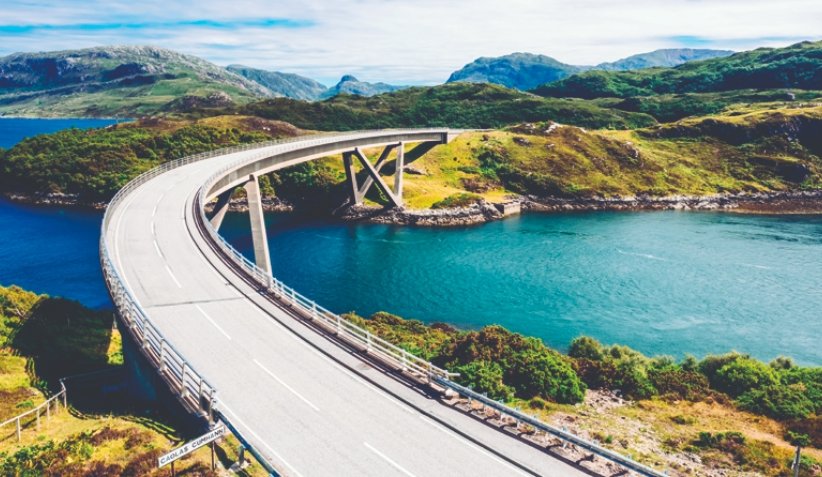The 516-mile loop meant to revive northern Scotland’s fortunes became a tourism success story — and then, a cautionary tale. Now locals and visitors are wondering what’s next.
At first, the North Coast 500 sounded like a clever fix. Take Scotland’s underappreciated north — windswept moors, stone crofts, cliffs that look borrowed from Iceland — and rebrand it as a dream drive. Simple. Romantic. Marketable. The kind of route that makes influencers squeal and road-trippers pack their bags.
But what started as a hopeful campaign in 2015 — backed by the North Highland Initiative and then-Prince Charles — has mushroomed into something else entirely. Somewhere between the campervan gridlocks, burnt grass, and overflowing bins, locals began to wonder: what have we done?
A Road Trip Rebrand That Actually Worked
Let’s be honest — not many expected this thing to take off the way it did.
Back in the early 2010s, the idea of making the far north of Scotland a travel magnet felt almost laughable. Old-timers remembered rainy drives in the back of rattling estate cars, dodging sheep and hoping the next town had a pub open. There were potholes, no phone signal, and menus that hadn’t changed since Thatcher.
Then came a slick new name: North Coast 500. Marketing gold. It sounded like Route 66 with more sheep and fewer gas stations. Travel writers swooned. Instagram exploded. Suddenly, Caithness and Sutherland weren’t just lonely corners of the map — they were bucket list material.
Tourism boomed. But so did the problems.

When the Views Go Viral, So Do the Visitors
The very things that made the NC500 beautiful — its emptiness, fragility, silence — weren’t built for the volume that followed.
Some days, single-track roads resembled theme park queues. Rental campervans edged past locals just trying to get to work. Ditches filled with waste. Beaches saw cars parked two-deep along the dunes. People barbecued where they shouldn’t. And when nature called? They didn’t always make it to a toilet.
By 2023, the backlash was loud enough to make headlines abroad. Last year, Fodor’s “No List” for 2025 flagged the NC500 as an example of overtourism gone wrong — urging travelers to give it a rest.
But has the whole route really gone to hell in a hashtag?
The Good, the Bad, and the Bog-Standard Complaints
For every story about a ruined pasture or broken stile, there’s another about revived communities, packed guesthouses, and reopened shops.
Let’s break it down a bit:
-
Economic Revival: Many remote villages now have B&Bs that actually stay full. Coffee shops that didn’t exist 10 years ago are thriving.
-
Increased Visibility: Places like Assynt and Applecross are now on the global travel map.
-
Local Frustrations: Emergency services stretched thin. Locals stuck behind caravans. Tourists misunderstanding “Passing Place” signs.
Some villages have introduced permits for wild camping, designated campervan bays, and even temporary traffic lights during peak months. But it’s all patchwork — there’s no national plan yet.
An Accidental Lesson in What Happens When You Market Wilderness
No new roads were built. No bypasses. No rest stops. The route remained what it always was: rugged, raw, a little remote. But now it came with expectations.
Tourists arrived looking for curated wilderness — dramatic landscapes, yes, but also WiFi, latte art, and parking spots. Locals found themselves torn: grateful for the economic boost, but drained by the disruption.
One Highland B&B owner summed it up bluntly: “It’s better than the place dying. But God, some mornings I just want peace.”
The truth? It’s messy. Tourism pays. But so does community stability. And those don’t always align.
Not the First, Not the Last
The NC500 is hardly alone. From Venice to Iceland to Banff, natural beauty spots worldwide are battling overtourism.
Here’s how the NC500 compares to some other famous hotspots:
| Route/Location | Annual Visitors (approx.) | Notable Issue |
|---|---|---|
| North Coast 500 (Scotland) | 500,000+ | Narrow roads, campervan overflow |
| Ring Road (Iceland) | 2 million+ | Infrastructure stress, pollution |
| Route 66 (USA) | 1 million+ | Preservation vs. modernization |
| Amalfi Coast (Italy) | 5 million+ | Traffic congestion, locals priced out |
Scotland may have fewer visitors overall, but the proportion per capita — and per resource — is staggering.
So, What’s the Fix?
Some are calling for a cap on campervan permits. Others want better signage, more toilets, and stricter fines. A few suggest rerouting the NC500 altogether — spreading tourists wider across the Highlands.
But locals are also asking for more than just rules. They want a seat at the table. More say in how their communities are promoted, managed, and supported.
Until then? The signs warning “No overnight parking” will keep going up. The Facebook groups complaining about litter will keep growing. And the NC500 will stay caught somewhere between iconic and inconvenient.


















